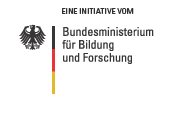Günter Höglinger: hunting the causes of Parkinson's
-
 <ic:message key='Bild vergrößern' />
<ic:message key='Bild vergrößern' />
- Günther Höglinger Quelle: Günter Höglinger
14.03.2012 -
The film “Life Story” first came out in 1987. From the point of view of one of scientists involved, the film describes the drama of the discovery of the structure of DNA, as well as the rivalry between the scientists in the run-up to the breakthrough. Sitting in the audience was the 16-year-old Günter Höglinger, who was interested in science already as a school pupil. “Watson and Crick discovered the double helix,” remembers Höglinger, “and then it was clear: I wanted to be a scientist!”. Today, Höglinger is a major player in the field of Parkinson's research, and since September 2011 has been active in the role of Heisenberg Professor at the German Center for Neurodegenerative Diseases (DZNE). At the DZNE’s Munich location, he conducts research into the causes of brain disease.
Following school, Höglinger – now a 41 year-old practising doctor - first studied physics, but after two semesters discovered human medicine and decided instead to opt for a career in medicine. Then, aided by a grant from the German Research Foundation, he put his doctor’s training on hold and headed off to the Hôpital de la Salpêtrière in Paris. This was his first taste of interdisciplinary research, which would later influence him greatly. “At the centre was not the methodology, but the study of disease by any means,” says Höglinger.
Tropical fruit as a cause of disease
Even today, he keeps this attitude close to his heart; in his current position at the DZNE in Munich, he applies a wide range of methods, and refuses to limit himself to a single approach to his research. Using a range of different techniques, such as genetic- and epidemiological studies, cell cultures, animal models, imaging and clinical studies, it is possible to carry out far more comprehensive and targeted research, says the scientist. After graduating in 2004, he became head of his own research group at the Department of Neurology, Philipps University of Marburg. There, he completed his training as a neurologist, before working as a senior consultant at the Department of Neurology at the same university. His specialty area: Parkinson's disease.
Even today, the causes of the disease are not clear; three-quarters of the 400,000 patients in Germany that suffer from a form of Parkinson's have no identifiable external or genetic cause. Only the clinical picture is known: Accumulations of proteins form at the nerve cells, destroying the affected cells. “There are two main groups of Parkinson's disease symptoms,” says Höglinger. “In one, it is the protein alpha-synuclein that accumulates, in the other it’s the tau protein. However, the direct origins of these protein aggregates are not known, and that’s exactly what we’re looking for.”
In the course of his research, Höglinger, whose post-doctoral studies focused on natural environmental factors on the Caribbean island of Guadeloupe as triggers of atypical Parkinson’s syndromes, has already identified one cause: he discovered that the graviola fruit, which is eaten in large quantities by the locals, can cause a syndrome of Parkinson’s. “Unfortunately, the highly delicious fruit contains a poison that interferes with the energy metabolism in cells,” explains the researcher. With this discovery he was able to show that in cases of progressive supranuclear palsy (PSP) – a particularly aggressive form of Parkinson's disease – energy consumption decreases in the patients’ brains, which can actually be improved with a targeted treatment.
In June 2011, in collaboration together with colleagues from Giessen and the US, he also identified four genes that promote the development of PSP.
Can smoking combat Parkinson's?
Höglinger’s team is currently working on a wide range of projects, such as a German-American study examining the relationship between nicotine and Parkinson's. “There is clear evidence that smokers suffer less frequently from Parkinson's”, explains Höglinger. “If nicotine actually has a protective effect, the then disease progression could possibly be delayed with a nicotine patch.”
Despite his research work, Höglinger is still working as a doctor, and has retained his passion for his job. A quarter of his time is spent as a senior physician at the Neurological Clinic at the Technical University of Munich. There, his job is to translate research results into practice. “In contrast to pure basic research in the laboratory, this position allows me to see patients, to identify their problems, and to participate in the development of new therapies,” says Höglinger. And he does not regret leaving physics behind him. “Physics is an extremely interesting science, but with medicine I knew from the beginning why I was studying: to help people,” he says. “That’s a very strong motivation.”
Autorin: Fabienne Hurst




